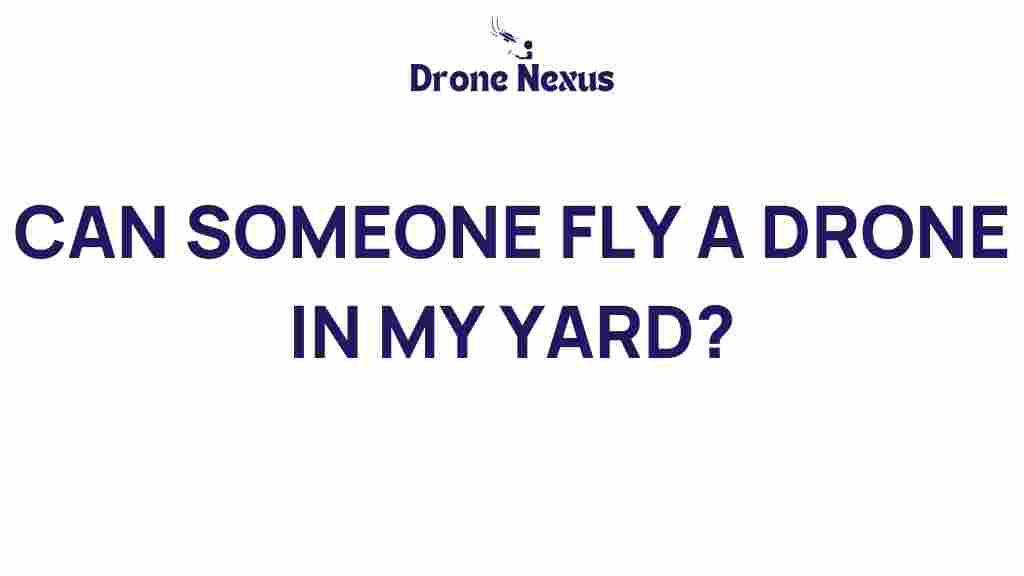Can Someone Fly a Drone in My Yard? Understanding Drone Laws
In recent years, the popularity of drones has skyrocketed, leading to an increase in their use for recreational and commercial purposes. However, this raises an important question for many homeowners: Can someone fly a drone in my yard? To answer this, we must unpack the complexities of drone laws that govern where and how drones can be operated.
Introduction
Drones, or unmanned aerial vehicles (UAVs), are increasingly being used for photography, surveying land, delivering goods, and even for recreational flying. While they can be incredibly useful, their presence can also create privacy concerns and disputes among neighbors. As a homeowner, it’s crucial to understand the legal landscape surrounding drone usage, not only for your peace of mind but also to ensure you’re complying with the law.
Understanding Drone Laws
The legal framework governing drone operations is multifaceted, involving federal, state, and local regulations. Below is a breakdown of the essential components of drone laws that you should be aware of.
- Federal Regulations: The Federal Aviation Administration (FAA) is the primary regulatory body overseeing drone operations in the United States. All drone operators must adhere to FAA guidelines, which include:
- Drones must be registered if they weigh more than 0.55 pounds.
- Operators must maintain visual line-of-sight with their drone.
- Drones cannot exceed an altitude of 400 feet.
- Flying drones over people is generally prohibited unless specific conditions are met.
- State and Local Laws: In addition to federal regulations, many states and municipalities have implemented their own drone laws. These can include:
- Restrictions on flying drones over private property.
- Prohibitions on capturing images or video without consent.
- Specific no-fly zones, particularly near schools, airports, or government buildings.
Can Someone Fly a Drone in Your Yard? Key Considerations
To determine whether someone can legally fly a drone in your yard, consider the following factors:
- Ownership of Airspace: While you own your property, you do not own the airspace above it. The FAA regulates airspace, meaning that someone can legally fly a drone over your property as long as they comply with FAA regulations.
- State and Local Regulations: Check your state and local laws regarding drone usage. Some states have enacted laws that prohibit flying drones over private property without the owner’s permission.
- Purpose of Flight: The purpose of the drone flight can also impact legality. Recreational use may have different regulations than commercial use.
- Privacy Concerns: If a drone is capturing images or video of you without consent, it may violate privacy laws. This can vary significantly by jurisdiction.
Step-by-Step Process: What to Do if You Spot a Drone in Your Yard
If you see a drone flying over your property and are concerned about it, follow these steps:
1. Observe the Drone
Before taking any action, observe the drone’s behavior. Note its appearance, altitude, and flight pattern. Understanding its purpose can help you determine how to respond.
2. Identify the Operator
If possible, try to locate the operator. They may be nearby and may not realize they are infringing on your privacy. A polite conversation can sometimes resolve the situation quickly.
3. Review Local Drone Laws
Research your local laws regarding drone operation. If the drone is flying in violation of these laws, you may have grounds for further action.
4. Contact Local Authorities
If you believe the drone is being operated illegally or poses a threat to your safety, contact local law enforcement. Provide them with any information you gathered during your observation.
5. Consider Legal Action
If the issue persists and you believe your privacy rights are being violated, consult with a legal professional who specializes in drone laws or property rights. They can guide you on possible actions.
Troubleshooting Tips: Addressing Drone Concerns
Here are some troubleshooting tips to help you address concerns related to drone activity in your yard:
- Install Privacy Barriers: Consider planting trees or installing fences to create a natural barrier that can obstruct drone visibility.
- Use Technology: There are technologies available that can detect drone activity. While they may not prevent drones from flying over your property, they can alert you to their presence.
- Communicate with Neighbors: If you suspect a neighbor is operating the drone, have an open dialogue about your concerns. They may not realize the impact their actions have on your privacy.
- Stay Informed: Keep up-to-date with changes in drone laws. Regulations can evolve, and staying informed can help you better protect your rights.
Conclusion
In summary, while someone can legally fly a drone in your yard under certain conditions, understanding drone laws is crucial for both drone operators and property owners. By being informed about federal, state, and local regulations, you can better navigate the complexities of drone usage and protect your privacy. If you find yourself frequently bothered by drones in your space, consider taking proactive steps to address your concerns.
For more information on drone laws and how they may affect you, check out this comprehensive guide on drone regulations here.
Additionally, if you’re facing persistent issues, you may want to consult with a legal expert who can provide tailored advice: Find a legal expert here.
This article is in the category Safety and created by DroneNexus Team
